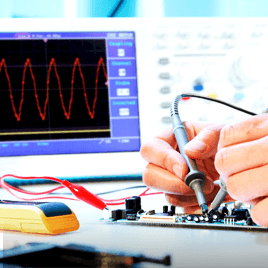Blog
FAQ: Risk Management for IEC 60601-1
FAQ: Risk Management for IEC 60601-1 What you need to know about Risk Management for medical devices What is Risk Management in 60601? Risk management is a series of risk evaluations performed by the manufacturer, based on ISO 14971, which are undertaken and documented throughout the design, production and post-production process of medical equipment. The... Read More
FAQ: FDA Laser Notice No. 50
FAQ: FDA Laser Notice No. 50 What you need to know about Laser Safety for United States and International markets What is FDA Laser Notice No. 50? Laser Notice No. 50 is an FDA guidance document that determines what components of IEC 60825 and IEC 60601-2-22 can be used to meet requirements found in 21CFR1040... Read More
IEC/EN/UL/CSA 61010-1 Third Edition
Since the release of the 3rd Edition, there have been varying interpretations regarding if and when a Risk Assessment is a requirement or merely an option. The disagreements have occurred between different Certification Bodies, between test houses and manufacturers, and even within specific discrete entities. Given this previous uncertainty and the possibility of inconsistently imposed... Read More
Partner Corner: What’s New at SIQ
Partner Corner: What’s New at SIQ New 9000 square meter facility and MET partnership provide more effective access to North American Certifications For more than 50 years, SIQ has provided comprehensive services for product testing & certification, management systems assessment, metrology, and training. Located in central Europe – Slovenia, SIQ maintains its international recognition and... Read More
What you should know about FCC Part 95: FAQ
What you should know about FCC Part 95: FAQ Recent revisions to FCC Part 95 for Personal Radio Services: Frequently Asked Questions. As radio devices have expanded their functionality and purpose, so have the standards that govern how they may be used. As of May 19, 2017, the FCC has adopted a series of reforms... Read More
FAQs: IEC 62368-1 Replacing IEC 60950-1 & IEC 60065; What You Should Know
What you should know about IEC 62368-1 HBSE FAQ IEC 62368-1 HBSE replacing IEC 60950-1 and IEC 60065: Frequently Asked Questions In recent times new electronic devices and applications have been developed at unprecedented rates; simultaneously, the lines between technologies have been, and continue to become, blurred. Product compliance standards, and standards committees, have been... Read More
How rugged are your products? Using MIL-STD-810 to improve the durability and ruggedness of commercial products.
How rugged are your products? Using MIL-STD-810 to improve the durability and ruggedness of commercial products. Although it was developed by the United States military, MIL-STD-810 is a test methodology that is used by many manufacturers now, regardless of whether they plan to sell to the U.S. Department of Defense. MIL-STD-810G allows for tailoring an... Read More
IEC 60601-1-2 4th Edition Medical EMC Webinar
In the 60601-1-2 4th Edition webinar, you will learn about changes coming with the 4th edition of the IEC 60601-1-2 standard. Topics include technical requirements, updates coming with the 4th edition of 60601-1-2, steps the manufacturer must perform to fulfill risk management requirements, new methods of risk analysis and immunity requirements to mitigate interference and... Read More
Hazardous Locations Guide: Certification & Markings
Hazardous Locations Guide: North American and IECEx/ATEX Certification & Markings The world of hazardous locations can be challenging to navigate as combustible dusts, flammable gases, mists or vapors can all contribute to potentially explosive atmospheres in the workplace. All equipment manufactured for use in explosive atmospheres must be suitably marked and there are many requirements... Read More
R&TTE to RED Transition Period for Radio Equipment Nearing an End
The European Parliament and Council Directive on Radio and Telecommunication Terminal Equipment (1999/5/EC) was revised in 2014 to become the Radio Equipment Directive 2014/53/EU. The R&TTE Directive covers all equipment that uses the radio frequency spectrum, with a few exceptions. It also covers all terminal equipment attached to public telecommunication networks. The main objective of... Read More




